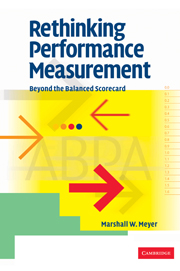4 - From cost drivers to revenue drivers
Published online by Cambridge University Press: 14 May 2010
Summary
The task at the heart of the performance measurement problem is finding the precursors of future cash flows – or, equivalently, the long-term viability and efficiency of the firm. Let us begin this chapter with a question: When are the drivers of costs also the drivers of revenues? All managers from time to time face a related question: where can we cut costs without impairing revenues, and where can we ill afford to cut costs because revenues will be impaired? This question is especially crucial in the context of global management, since success in the global marketplace often requires driving unit costs downward relentlessly. If there were simple ways to cut costs without impairing revenues, much of the performance-measurement problem would disappear, and many of the tough choices facing managers would be easier. But there are no simple solutions. Separating costs that should be managed aggressively from costs that must be tolerated because they are incurred by critical revenue drivers can be very difficult.
This chapter develops a new approach to performance measurement, activity-based profitability analysis (ABPA). ABPA is founded on a simple premise: if you understand the activities in which the firm engages, their costs, and the revenues that result from them, then you have a powerful tool for measuring and improving the performance of the firm.
ABPA is based on the elemental conception of the firm that defines the performance of a firm as what the firm does, its activities, and the measure of performance as the revenues generated by these activities less the cost of performing them.
- Type
- Chapter
- Information
- Rethinking Performance MeasurementBeyond the Balanced Scorecard, pp. 113 - 144Publisher: Cambridge University PressPrint publication year: 2003

